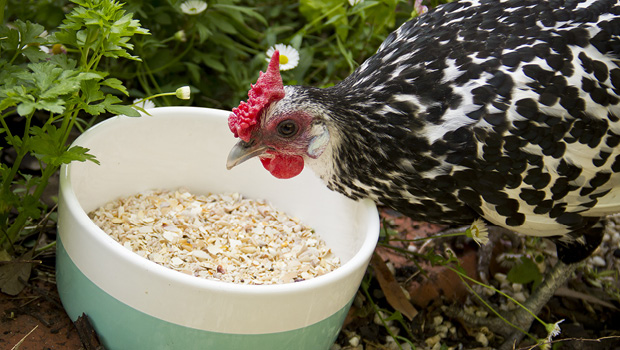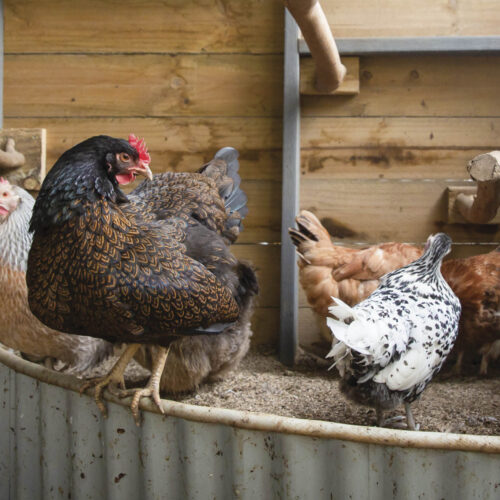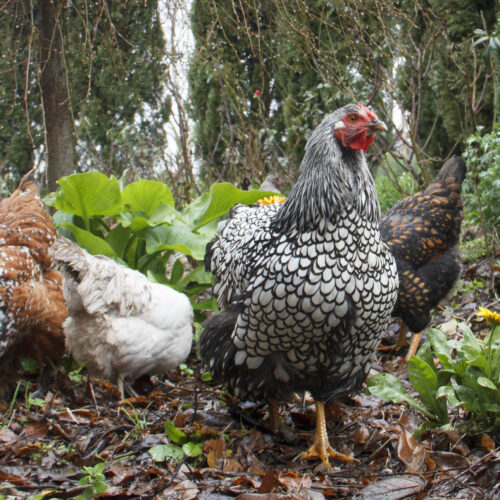The nitty gritty on shell grit
2016-10-23T23:31:13+11:00
Chook whisperer JESSAMY MILLER explains why your hens need shell grit.
My favourite part of spring is seeing backyard egg production at full tilt. To maintain this hectic laying schedule, hens need a nutritious diet and plenty of shell grit. It’s easy to confuse shell grit with hard grit, the small stones fowls ingest to help grind feed in the gizzard. In fact, laying hens need both kinds of grit, as the crushed seashells are crucial for healthy eggs.
No grit, no pearl
Shell grit provides the calcium that is used to make eggshells. Without a sufficient intake, hens are more likely to lay thin-shelled or soft-shelled eggs, and become prone to internal egg breakages and becoming egg bound. Calcium is also used in many other processes inside the hen’s body. It functions in association with a smaller amount of phosphorus, and these can only be utilised in the presence of vitamin D3. Protein is also required to facilitate the process. This is why a balanced diet is a must for chooks.
Where there is a shortfall in dietary calcium, hens must call on reserves in their medullary bones, in the sternum, pelvis and legs. Over time this can lead to the skeleton being compromised and stress fractures can occur. Avoid this by supplying medium grade shell grit, the most effective sized pieces for absorption by poultry. The grit is retained in the glandular stomach where it is dissolved into the blood stream and utilised to make the eggshell.
Don’t quit on grit
Let the chooks help themselves to shell grit rather than mixing it in with food. This allows them to access it at the right time for optimal absorption to make the shell. Most hens prefer to peck away at it in the mid afternoon, ready for the 18-hour shell formation process that occurs overnight. A constant supply also means hens laying at different rates can choose the exact amounts they need.
Good news: shell grit is cheap and cheerful. A 25kg bag cost me around $20 from my local stock feed store, and will last years. Additionally, I save my eggshells, dry them in a low oven, crush them into small pieces, and add them to the shell grit supply. However, it’s best not to rely on eggshells alone, as this is likely to create a calcium shortfall; a hen would need to eat two or three eggshells a day to produce one egg.
Shell grit needs to be provided to hens from point of lay (around 20 weeks) onwards. Chicks and roosters don’t require calcium beyond what’s in their proprietary feed, and don’t tend to help themselves to the hens’ stash.
I prefer to offer ours in a heavy bottomed dog feed bowl so it can’t be turned over. It’s important to keep shell grit clean; don’t let it get dusty or full of debris. Research has found chooks prefer shiny, fresh-looking shell grit. Crikey – perhaps they’ll expect us to polish it up for them next!






